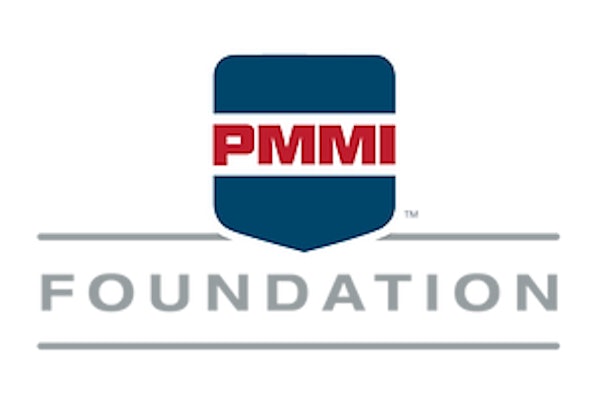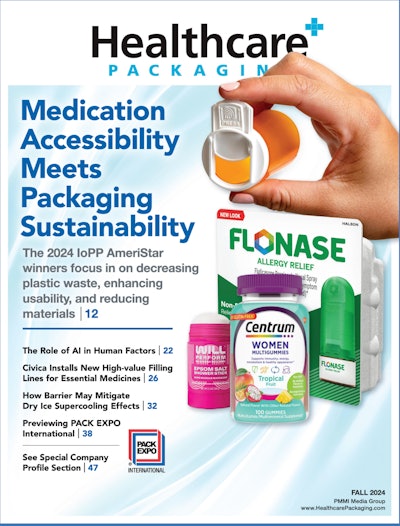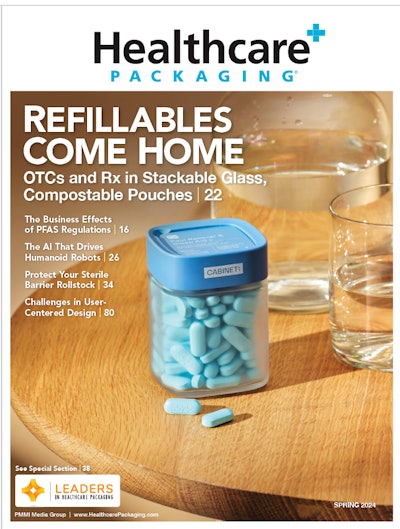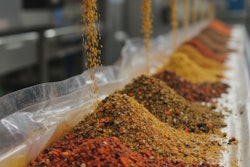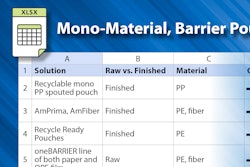Continuous thread (C-T) closures are meant to be applied to containers (e.g., bottles, jugs, jars, tubes, aseptic cartons) that have matching C-T finishes (necks). The matching needs to be in terms of dimensions and styles, for the container and closure to combine in a secure fit. The designation, C-T, means that the thread travels a continuous spiral around the finish, unlike with a lug finish, wherein, the thread is interrupted and not continuous. C-T closures are used in a wide variety of product categories, including food, beverage, cosmetics, personal-care, pharmaceuticals, and household chemicals, among others.
The wide use of C-T closures bespeaks its simplicity. The conveniences of easy opening and easy reclosing are accomplished with a counterclockwise turn and a clockwise turn, respectively. That simplicity, though, is an end-result that’s in contrast to the complexities that preceded it. Packaging suppliers, packaging designers, and packaging users (i.e., brand owners) had to have managed a host of factors and considerations. Convenience is not the only function affected—in addition, there are containment, protection, and communication. As if that wasn’t enough, aesthetics also can come into play.
As with all packaging-related undertakings, decisions start with the product. It stands to reason that products with dissimilar characteristics will have dissimilar needs regarding C-T closures. Reflecting this fact, C-T closures are available in standard stock designs, as well as specialized designs to accommodate requirements such as trigger spraying, dispensing, measuring/dosing, tamper-evidence (T-E), and child-resistance (C-R).
Specifying C-T closures and containers that have C-T finishes is facilitated by standardized nomenclature, such as that of the Glass Packaging Institute and the Plastics Industry Association (PLASTICS). Dimensions are designated by letters. For a container’s finish, T is the outside diameter across the threads, E is the outside diameter within the threads, I is the inside diameter, S is the measurement from the top of the finish to the top of the first thread, and H is the height (the measurement from the top of the finish to the bottom of the finish, where it meets the container’s shoulder). For a C-T closure, the same letters are used in a mirroring fashion, given that the closure overlays the finish and that the external threads of the finish glide up and down the internal thread tracks of the closure.
Threads on the finish of a container have a profile style. Looking at a container’s finish from a sideview, you will note that the thread has a radius and angles (top and bottom). That’s what meant by a profile style; there are two, designated as L and M. C-T closures, in counterpart, are designed as L style or as M style.
The L style is symmetrical, with angles of 30 deg and with wider variety of applications. It’s cost-effective in that its symmetry simplifies mold design. Cost-effectiveness is further enhanced when closures are made of thermoplastics (polyethylene or polypropylene) and manufactured by injection molding. Yet another plus of the L style is its proven compatibility with high-speed capping stations. All of that said, it would not be packaging-related if it didn’t require systematic trade-offs. The L style is less precise when it comes to holding tight tolerances. That can be a problem if the matching container has been produced from an older mold that has surrendered some of its dimensional sharpness over time.
The M style—also known as a modified buttress—is asymmetrical, having a top angle of 45 deg and a bottom angle of 10 deg. There is a longer contact surface between the thread on the finish and the track inside the closure, making for a tighter, more secure seal. That degree of margin is valuable when leak resistance is of maximum importance. Examples include large-size bottles and hazardous substances, such as strong chemicals. On the debit side, M style C-T closures are more expensive, owing to their more complex design. And there’s the issue of availability—some closure suppliers don’t offer the M style.
Another shared designation between finish and closure is based on finish width and thread turn. It’s composed of a two-digit designation and a three-digit designation, separated by a dash. The two digits state the outer diameter of the finish, in millimeters. The three-digits refer to the turns that the threads make around the finish but have no literal translation. A 28-400 C-T closure, for example, is meant to match a finish having an outer diameter of 28 millimeters, with a thread that spirals 1 full turn around the finish. There are other three-digit designations. For example, 410 designates 1.5. thread turns, 415 designates 2 thread turns, and 425 designates 2 thread turns but with narrow threads. Of a given thread, the larger the number of turns, the taller the finish must be. To accommodate a shorter finish, therefore, 2 thread turns require a narrower thread.
Despite this standardization, ordering C-T closures is not akin to online shopping, clicking on items to put in a cart. If that were the case, there would be no instances of C-T containers and C-T closures failing somewhere in the supply chain. Things sometimes go wrong, necessitating troubleshooting. That will be the topic of next month’s article. PW
Sterling Anthony, CPP, consults in packaging, marketing, logistics, and human-factors. A former faculty member at the Michigan State University School of Packaging, his contact info is:100 Renaissance Center, Box-176, Detroit, MI 48243; 313/531-1875; [email protected]








